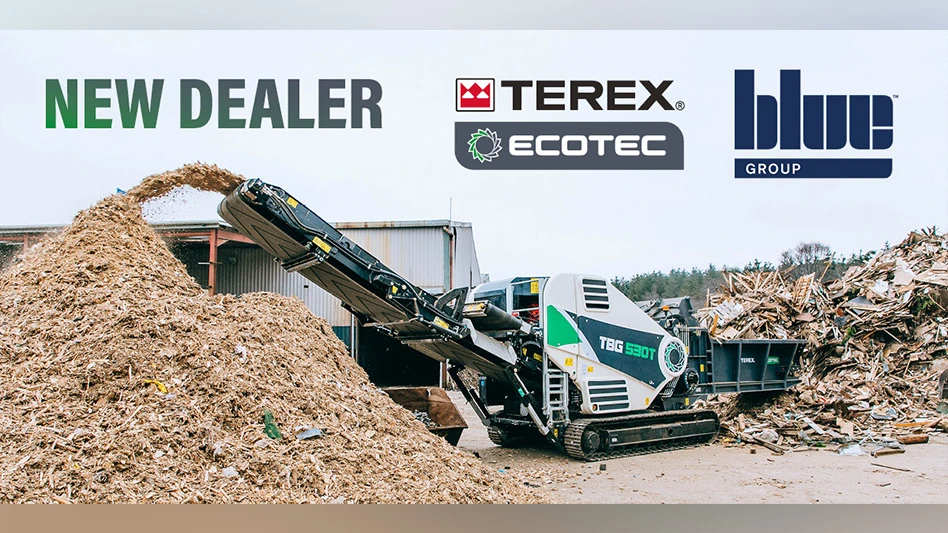
Photo by DeAnne Toto
Representatives from waste and recycling companies discussed the integration of artificial intelligence (AI) and data in the industry, stressing the importance of metadata, creating data lakes for consolidated data and using AI to aid in driver training and safety during the session CIO Power Panel Part II during WasteExpo, which was May 5-8 in Las Vegas.
This integration comes with challenges, however, such as data governance and partner selection.
Data is the “oxygen” for AI, moderator Pritesh Pattni, chief commercial officer at London-based ISB Global, said, adding that it fuels everything AI needs to work.
“In our organization, we started building the feeder systems for AI three years ago,” said Mike May, chief information officer at GFL Environmental Inc., headquartered in Vaughan, Ontario, noting this effort was based on two elements. “Element No. 1 is the traditional transactions that come out of our business systems that provide the facts associated with whatever function we're measuring with the data. The second one is the metadata, the derived data from the transaction data.”
May offered an example of a customer calling the help desk or call center.
“The call center agent must have data available at their fingertips to respond to that customer,” he said.
“If you have the proper metadata, you can assemble the last 30 interactions that a truck had at the customer’s service locations. You can assemble the last 20 invoices that the customer had, the last 20 call center interactions. What an AI model can do then is ingest that using RAG and provide the agent with a real-time synopsis of what's this call likely to be like,” May added, referencing retrieval-augmented generation, or the process of optimizing the output of a large language model so it references an authoritative knowledge base outside of its training data sources before generating a response.
“And on top of that, because I have those individual transaction pieces available, we can talk about the last two transactions, or the last invoice or the last visit to a service location.”
Data governance, therefore, is particularly important, May added, “because if you have anarchy around data, you're going to get inconsistent results.”
Eric Hansen, chief information officer at Waste Connections, headquartered in Toronto, said his company has grown through acquisition, resulting in multiple databases that the company has brought together in a “data lake,” or a centralized repository containing structured and unstructured data.
In addition to operational data, Waste Connections included customer service data, safety data, phone data and geo-fencing data in the data lake. The company then added a lakehouse that uses medallion architecture to logically organize the data to incrementally and progressively improve the data’s structure and quality as it flows through each of the three layers—bronze, silver and gold—of the architecture.
“All your data is now in one place,” Hansen said. “This gold version then feeds your AI models, and that's how you can make this decentralized company look and feel and act centralized.”
Kelleigh Shankel, chief technology officer at Battle Motors, New Philadelphia, Ohio, said the company gets contextual data from its chassis, including from the engines and powertrains.
“The contextual data is really what makes the data actually be applicable to the routes, to the driver, to the individual who's actually performing the task," Shankel said.
Battle Motors can aggregate that data and feed it to an AI model, turning it into a learning model for drivers, she said.
Pattni asked the panelists if they were concerned about feeding important business information to AI models.
“Now you've got the ugly side of AI, the governance part,” Hansen said, adding that while governance is not nearly as fun to work on, it is important.
He said Waste Connections built a policy, telling employees what they could do and all potential things that could go wrong if data was put in the wrong place, stressing that they are responsible for the data.
“And then I, of course, bought the backup system that shows me what everything does with AI, and that's how you end up governing from our standpoint," Hansen said.
May said he follows AI researchers who performed a test that involved an individual creating a series of queries on an esoteric topic.
“Over time, they found that the data that they fed into that topic showed up again in their future responses, so it is a real risk," he said. "You need to pick your partners very, very carefully. For instance, we are working with Google, and they have a promise that says your data never leaves your domain. So not only does it stay within the GFL domain, it does not bleed into the Google domain or into the public domain.”
May added it is critical that technology partners have policies that prevent data from bleeding into the public domain.
“It's really important to pick your partners [and] read the Ts and Cs [terms and conditions] for that very reason,” he said, advising that all agreements be shared with a company’s legal department to see if they have detrimental side effects.
Pattni said AI and machine learning paired with visual recognition could transform driver training, which he said was an important topic given that waste companies are interested in improving drivers’ experiences for safety and employee retention reasons.
“This is absolutely huge,” Shankel said, noting that Battle has married its vision system with driver training to help with route optimization. The company can track where the driver is going and why.
“You can train your customers too, which is really fun,” she continued. “If you have customers calling in and saying, ‘Hey, you didn't pick up my trash tonight,” but with the vision systems, you can literally have proof, and so that also builds customer trust. But bringing this back to the driver. It also holds them accountable and gives you an opportunity to train them on, ‘Hey, yes, this bin was overfilled, and it's overfilled every time, but you didn't secure the arms before you lifted the can.”
Battle also uses its AI system to prefill inspection reports for drivers (DIRs) using customized templates. “Let's say you want the tire pressures to be automatically populated on the DIRs, but then you see Driver A has a ton of blowouts. He has 80 percent more blowouts than any other driver. So, then you can unselect that and make him manually enter the tire pressures every time.”
May said companies can apply AI to generate value in a number of instances.
“When you're planning out how you're going to deliver value to the organization, you almost have to look at each of the different functional domains and then start listing opportunities," he said.
While GFL has a large AI information technology group, he said, “We're not AI experts, we're integrators. So our partners are, in fact, our best friends when it comes to delivering value to the corporation.”
May said AI has many different “flavors,” from large language models to machine learning, or ML. “ML is one of the primary mechanisms of being able to say, ‘Hey, an event occurred.’”
He offered an example of a driver of a commercial front-end loader who normally takes 40 to 60 seconds to leave the vehicle, put the parking brake on, open the gate, come back to the truck and release the parking brake to service the container.
“If you have an eight-minute gap instead of the 60-second gap, there's an event that's important,” May said. “ML is what drives that event, which is typically container blocked [or] container locked. And guess what? There's an ancillary charge associated with it. So, there's money to be made from ML just from the data that comes from the vehicles.”
Latest from Recycling Today
- China to introduce steel export quotas
- Thyssenkrupp idles capacity in Europe
- Phoenix Technologies closes Ohio rPET facility
- EPA selects 2 governments in Pennsylvania to receive recycling, waste grants
- NWRA Florida Chapter announces 2025 Legislative Champion Awards
- Goldman Sachs Research: Copper prices to decline in 2026
- Tomra opens London RVM showroom
- Ball Corp. makes European investment





